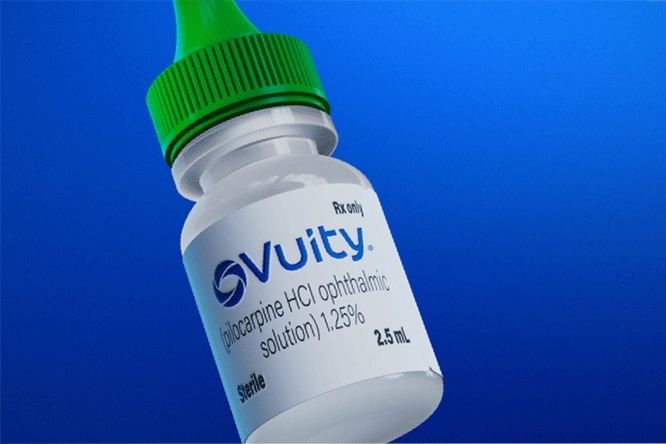
Nature of Female Sex Steroids and Contraceptive Agents
Female sex steroids primarily include estrogen and progesterone, which are crucial for the regulation of the menstrual cycle, reproductive system, and secondary sexual characteristics. These hormones are produced mainly by the ovaries, with estrogen being synthesized from androgens and progesterone being secreted after ovulation.
Contraceptive agents can be classified into hormonal methods (which often contain synthetic forms of these hormones) and non-hormonal methods. Hormonal contraceptives include combined oral contraceptives (COCs), progestin-only pills (POPs), patches, injections, implants, and intrauterine devices (IUDs) that release hormones.
Mechanisms of Action
- Estrogen:
- Estrogen primarily functions by binding to estrogen receptors in various tissues, including the uterus, breast, and bone. This binding leads to changes in gene expression that promote the development of female secondary sexual characteristics and regulate the menstrual cycle.
- In contraceptive use, estrogen works synergistically with progestin to inhibit ovulation by suppressing follicle-stimulating hormone (FSH) release from the pituitary gland.
- Progesterone:
- Progesterone prepares the endometrium for potential implantation of a fertilized egg. It also thickens cervical mucus to impede sperm passage and alters the uterine lining to prevent implantation.
- In hormonal contraceptives, progestins mimic natural progesterone’s effects but may also have additional actions such as inhibiting ovulation by suppressing luteinizing hormone (LH) surge.
- Combined Oral Contraceptives (COCs):
- COCs contain both estrogen and progestin. They prevent ovulation through multiple mechanisms: suppression of FSH and LH secretion prevents follicular development; alteration of cervical mucus inhibits sperm penetration; and changes in endometrial lining reduce the likelihood of implantation.
- Progestin-Only Pills (POPs):
- POPs primarily work by thickening cervical mucus and thinning the endometrial lining while providing less reliable inhibition of ovulation compared to COCs.
- Long-Acting Reversible Contraceptives (LARCs):
- Methods like hormonal IUDs release progestins locally within the uterus, providing effective contraception through similar mechanisms as POPs but with a lower systemic exposure.
Adverse Effects
The use of female sex steroids and contraceptive agents can lead to various adverse effects:
- Common Side Effects:
- Nausea
- Breast tenderness
- Headaches
- Mood changes
- Serious Risks:
- Venous thromboembolism (VTE): The risk is higher in women using COCs compared to non-users.
- Hypertension: Hormonal contraceptives can elevate blood pressure in some individuals.
- Stroke: There is an increased risk associated with certain types of hormonal contraceptives, particularly in smokers or those with other risk factors.
- Specific Concerns Related to Progestins:
- Some studies suggest a potential link between certain progestins used in hormonal contraceptives and an increased risk of breast cancer.
- Long-term use may lead to decreased bone density due to reduced estrogen levels if not balanced appropriately.
- Other Considerations:
- Breakthrough bleeding is common during initial months of starting hormonal contraception.
- Some women may experience weight gain or loss depending on individual responses to hormonal changes.
In summary, female sex steroids play a vital role in reproductive health through their regulatory functions on various physiological processes while serving as key components in many contraceptive methods. Understanding their mechanisms helps inform safe usage while recognizing potential adverse effects ensures better management strategies for users.
Therapeutic Applications of Antiestrogenic Agents
Antiestrogenic agents, particularly selective estrogen receptor modulators (SERMs) like tamoxifen, have several important therapeutic applications primarily in the context of breast cancer and other related conditions. The following outlines these applications in detail:
1. Treatment of Hormone Receptor-Positive Breast Cancer: Antiestrogens are predominantly used to treat breast cancers that express estrogen receptors (ER-positive). These agents work by blocking estrogen from binding to its receptors on cancer cells, thereby inhibiting their growth and proliferation. Tamoxifen is the most widely used antiestrogen for this purpose and has been shown to significantly reduce the risk of cancer recurrence after surgery.
2. Chemoprevention in High-Risk Populations: For women identified as being at high risk for developing breast cancer—such as those with a family history or genetic predispositions—antitestrogens can be administered as a preventive measure. Tamoxifen has been shown to lower the incidence of breast cancer in these populations, making it a critical tool in chemoprevention strategies.
3. Adjuvant Therapy Following Surgery: After surgical intervention for ER-positive breast cancer, antiestrogens are often prescribed as adjuvant therapy. This approach aims to eliminate any remaining cancer cells and reduce the likelihood of recurrence. Typically, treatment lasts for at least five years, although some patients may benefit from extended therapy based on individual risk assessments.
4. Treatment of Ductal Carcinoma In Situ (DCIS): In cases where patients have been diagnosed with DCIS that is hormone receptor-positive, tamoxifen can be utilized post-surgery to decrease the chances of recurrence or progression to invasive breast cancer.
5. Management of Advanced Breast Cancer: In metastatic settings where breast cancer has spread beyond the primary site, antiestrogens can be employed to manage disease progression. They help control symptoms and prolong survival in patients with advanced hormone receptor-positive tumors.
6. Bone Health Maintenance: Some antiestrogens exhibit estrogen-like effects on bone tissue, which can help maintain bone density in postmenopausal women undergoing treatment for breast cancer. This is particularly relevant given that many women experience bone density loss due to reduced estrogen levels after menopause.
7. Cardiovascular Protection: There is evidence suggesting that certain antiestrogens may confer cardiovascular benefits by mimicking estrogen’s protective effects on heart health, thus potentially reducing cardiovascular disease risks associated with menopause.
In summary, antiestrogenic agents play a crucial role not only in treating existing hormone receptor-positive breast cancers but also in preventing new cases among high-risk individuals and managing various aspects related to women’s health during and after treatment.







